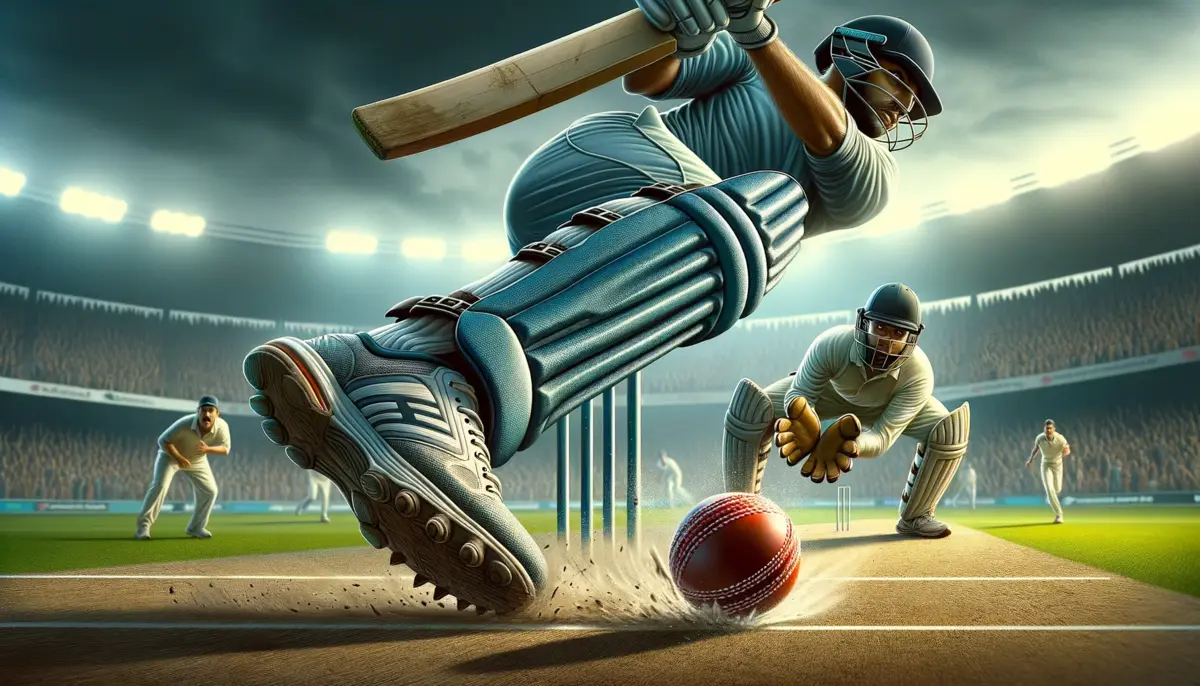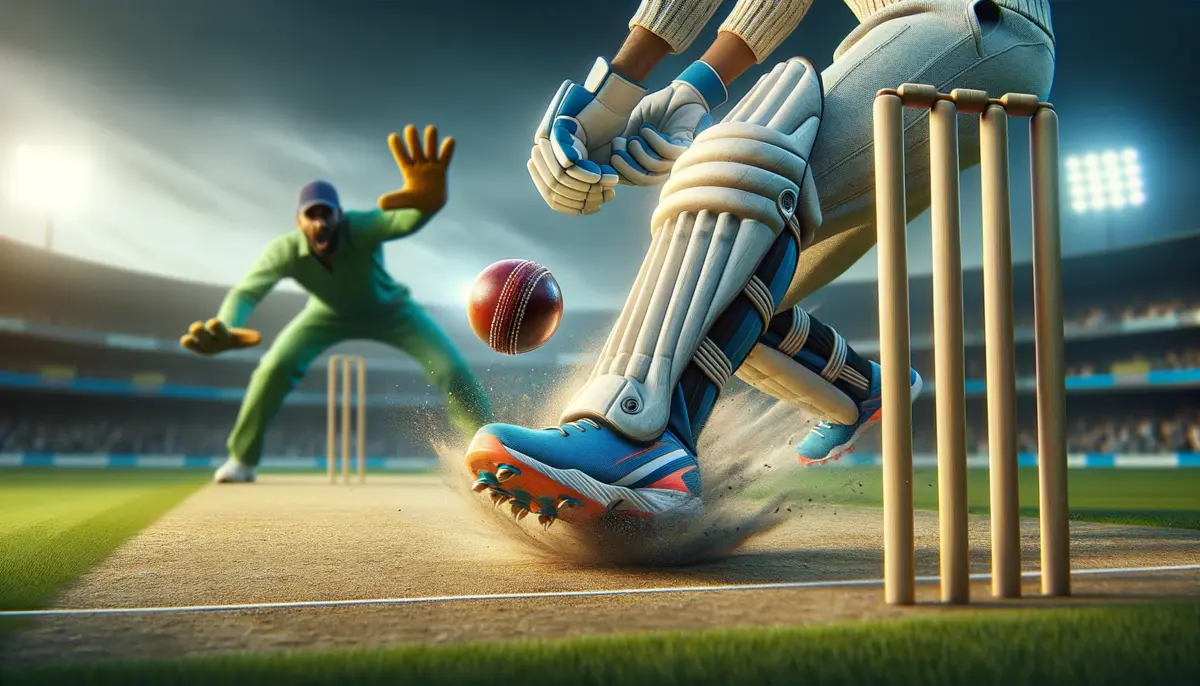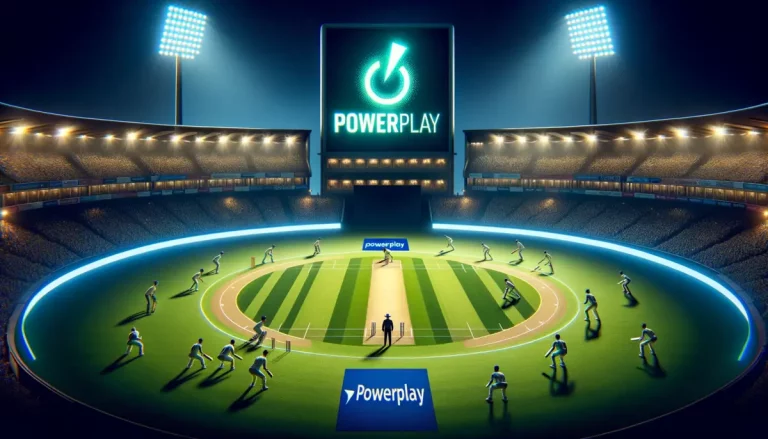The Difference Between LBW and Caught in Cricket
The Difference Between LBW and Caught in Cricket – For devoted cricket fans, dismissals like LBW (leg before wicket) and caught outs are key facets of the game to understand.
In this article, we’ll explore the intricacies and differences between these two common dismissal methods.
Up to 75% Reload Bonus on Aviator
Up to 75% Reload Bonus on Aviator
- Easy Sign-Up and Deposits
- Win 1000x Bet Amount!
- 300% Welcome Bonus up to ₹10,000
We’ll examine how each one occurs and the rules governing when umpires can call them. You’ll learn strategies batters can use to avoid getting out LBW or caught.
TL;DR
Hide- LBW involves the ball striking the batsman's leg before hitting the bat, while a catch requires a fielder to catch the ball before it touches the ground.
- The point of impact on the batsman's leg and the trajectory of the ball determine if it would have hit the wicket in an LBW decision.
- LBW decisions can be reviewed using technology, while a catch is determined by the umpire's assessment of the fielder's control over the ball.
- Strategies to avoid LBW include playing the ball with the bat, using footwork, and avoiding risky shots towards the leg side, while strategies to avoid getting caught include playing shots along the ground, aiming for gaps, and practicing control and precision.
Deepening your knowledge of adjudicating and preventing these dismissals will help enhance your appreciation of the sport’s subtle complexities.
By becoming a well-informed fan, you can savor the game even more as both a player and spectator.
LBW: Definition and Basic Rules
To understand LBW in cricket, you need to know its definition and the basic rules that apply to it. LBW, which stands for Leg Before Wicket, is a crucial aspect of cricket that often sparks heated debates and intense discussions among players and fans alike.
In simple terms, LBW occurs when the ball strikes the batsman’s leg before hitting the bat and the umpire determines that the ball would have gone on to hit the wicket if the leg hadn’t been there. This rule is in place to prevent batsmen from using their legs as a shield to protect the wicket.
The basic rules of LBW revolve around three key factors: the point of impact, the line of impact, and the projected path of the ball.
The point of impact refers to where the ball strikes the batsman’s leg. If the ball hits the batsman outside the line of off stump and would have gone on to hit the wicket, the umpire may give an LBW decision.
The line of impact is crucial as it determines whether the ball would have hit the wicket or not.
Finally, the projected path of the ball is considered to assess whether the ball was going on to hit the stumps or not.
LBW decisions are often contentious, with players, commentators, and fans dissecting replays and analyzing the decision-making process.
The advancement of technology, such as the introduction of Decision Review System (DRS), has added a new layer of complexity to LBW decisions.
The DRS allows teams to challenge umpire’s decisions using technology to review the trajectory of the ball and determine its probable path.
Understanding LBW in cricket is essential for players and fans who want to grasp the intricacies of the game. It’s a rule that requires careful analysis, knowledge of the laws, and an understanding of the game’s dynamics.
By familiarizing yourself with the definition and basic rules of LBW, you’ll be better equipped to appreciate and engage in discussions surrounding this fascinating aspect of cricket.
Caught: Definition and Basic Rules
When it comes to cricket, understanding the difference between LBW and Caught is crucial, as both terms refer to different ways in which a batsman can be dismissed.
Let’s delve into the definition and basic rules of being caught.
Definition and Basic Rules of Caught
- A catch occurs when a fielder catches the ball before it touches the ground, resulting in the dismissal of the batsman. It’s one of the most exciting moments in the game, creating a sense of anticipation and thrill for both players and fans alike.
- The fielder must have complete control over the ball when catching it, which means they must grasp it firmly in their hand or any part of their clothing in contact with their hand. This rule ensures fairness and accuracy in determining whether a catch has been successfully taken.
- The ball can be caught by any fielder, regardless of their position on the field, as long as it’s within the boundary ropes. This inclusivity allows for moments of brilliance from unexpected sources, fostering a sense of unity and teamwork among the players.
Understanding the rules of being caught in cricket not only adds to the enjoyment of watching the game but also empowers you with the knowledge to appreciate the skill and precision required to execute a successful catch.
So, keep your eyes peeled for those breathtaking moments when the ball soars through the air and a fielder leaps to claim a wicket.
Key Differences Between LBW and Caught

One important distinction between LBW and Caught in cricket is that a certain number of fielders are required for a catch, while LBW involves no fielder at all.
When a batsman is caught, it means that a fielder, other than the wicket-keeper, catches the ball hit by the batsman before it touches the ground.
In contrast, LBW stands for Leg Before Wicket, and it occurs when the ball hits the batsman’s leg, rather than the bat, and the umpire deems it would have gone on to hit the wicket.
To better understand the key differences between these two terms, let’s take a closer look at the following table:
| Things | Caught | LBW |
|---|---|---|
| Fielders Required | At least one fielder | No fielder required |
| Ball Contact | Ball must be caught before it hits the ground | Ball must hit the batsman’s leg |
| Wicket-keeper’s Role | Wicket-keeper can catch the ball to get the batsman out | Wicket-keeper does not play a role in LBW decisions |
As we can see from the table, the presence of fielders and the manner in which the ball makes contact with the batsman or the ground are the primary distinctions between a catch and an LBW decision.
Now that we have examined the key differences between these terms, it’s time to delve into how LBW and Caught are adjudicated.
LBW and Caught: How They Are Adjudicated
Now let’s dive into how LBW and Caught are adjudicated in cricket. When it comes to making decisions on LBW and Caught, the umpires play a pivotal role. They’re responsible for ensuring fair play and making accurate judgments. Here’s how these two forms of dismissals are adjudicated:
- LBW: The umpire considers various factors while making an LBW decision. They determine if the ball pitched in line with the stumps, if it would have hit the stumps, and if the batsman made a genuine attempt to play the ball. The decision is based on the umpire’s judgment and often involves intense scrutiny and debate.
- Caught: In the case of a catch, the umpire assesses whether the ball was cleanly caught by the fielder without any contact with the ground. They need to be certain that the fielder had complete control of the ball before giving the batsman out. This decision can be challenging, especially when the catch is low to the ground or taken in diving or tumbling fashion.
- Third Umpire: In some cases, the umpires may refer to the third umpire for assistance. The third umpire uses technology, such as slow-motion replays and snickometer, to analyze the evidence and provide a conclusive decision.
These adjudications are crucial in determining the fate of a batsman and can have a significant impact on the outcome of a match.
The umpires’ role in making fair and accurate decisions adds to the excitement and tension of the game, ensuring a level playing field for both teams.
Strategies for Avoiding LBW and Caught Dismissals
To avoid LBW and Caught dismissals, you can employ various strategies during your time at the crease.
Firstly, it’s important to have a solid understanding of the rules and regulations surrounding LBW and Caught dismissals. Study the laws of the game to ensure you’re aware of the criteria that the umpires use to make their decisions.
Next, work on your footwork. Good footwork allows you to get in the right position to play the ball, minimizing the chances of getting caught behind or being trapped in front of the wicket.
Practice moving your feet quickly and decisively, both forward and backward, to counter the movement of the bowler.
Another effective strategy is to focus on playing with a straight bat. This reduces the chances of edging the ball to the wicketkeeper or slip fielders. Keep your bat close to your body and try to play the ball with a vertical or slightly angled bat.
Additionally, it’s crucial to have a good understanding of the field placements. Take note of where the fielders are positioned and try to find the gaps to score runs. Avoid playing risky shots towards the fielders or in areas where there’s a higher chance of getting caught.
Conclusion: Difference Between LBW and Caught in Cricket
In conclusion, understanding the difference between LBW and caught dismissals is crucial for both players and spectators of cricket.
While both methods result in a batsman being out, they’re determined by different factors.
200% Spribe Aviator Welcome Bonus
200% Spribe Aviator Welcome Bonus
- Fastest Indian Rupees Withdrawals
- Fast deposits with UPI
- 300% Welcome Bonus up to ₹10,000
LBW is determined based on the ball’s impact on the batsman’s body, while caught dismissals involve the ball being caught by a fielder before hitting the ground.
- What is Appeal in Cricket?
- What Is Action (Bowling) in Cricket?
- Evaluating the Role of Technology in Cricket Scoring System
- Examining the Impact of Weather Conditions on Cricket Scoring System
- Exploring the Psychology Behind Batsman’s Approach to Cricket Scoring System
- How Does the Duckworth-Lewis Method Work in Cricket Scoring System?
- Understanding the Importance of Boundaries in Cricket Scoring System
Knowing the distinctions and strategies for avoiding these dismissals can greatly impact a player’s performance on the cricket field.
Frequently Asked Questions (FAQs)
What Are the Specific Criteria That Need to Be Met for a Batsman to Be Given Out LBW?
To be given out LBW, you must be a batsman and the ball must hit your leg in front of the stumps, within certain parameters. If these criteria are met, you are LBW.
Can a Batsman Be Given Out Caught if the Ball Touches the Ground Before Being Caught by a Fielder?
Yes, a batsman can be given out caught if the ball touches the ground before being caught by a fielder. This is known as a fair catch, where the ball is caught cleanly without hitting the ground first.
What Happens if a Batsman Is Given Out LBW but the Ball Was Going to Miss the Stumps?
If a batsman is given out LBW but the ball was going to miss the stumps, you would be disappointed because it means you lose your wicket unfairly, as the ball didn’t have a chance to hit the stumps.
Are There Any Circumstances in Which a Batsman Can Be Given Out Both LBW and Caught on the Same Delivery?
Yes, there are circumstances in which a batsman can be given out both LBW and caught on the same delivery. If the ball hits the bat first and then hits the pad, the batsman can be given out LBW if the umpire feels the ball would have hit the stumps.
How Often Do LBW and Caught Dismissals Occur in Professional Cricket Matches on Average?
On average, professional cricket matches see a significant number of LBW and caught dismissals. These dismissals occur frequently and can greatly affect the outcome of the game.








